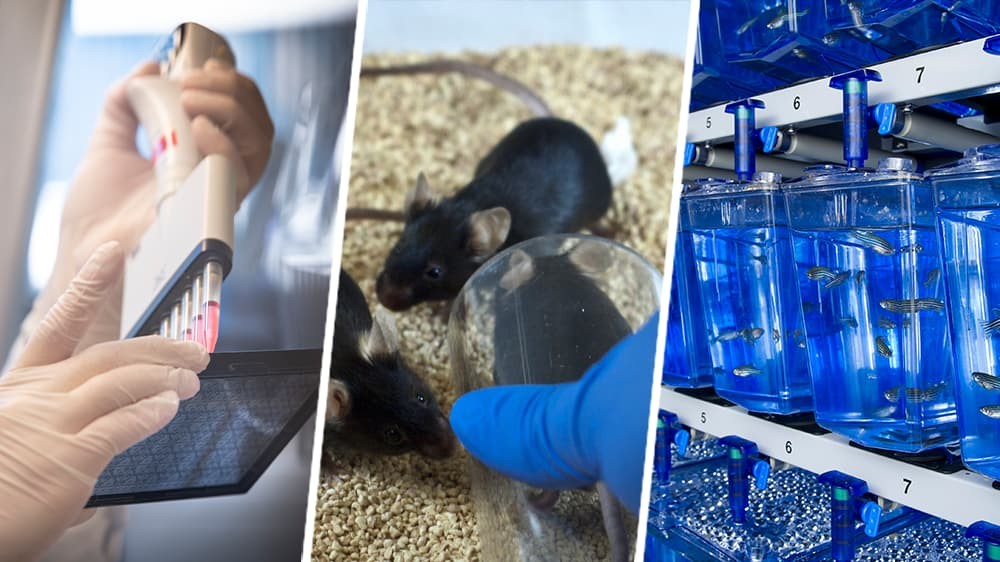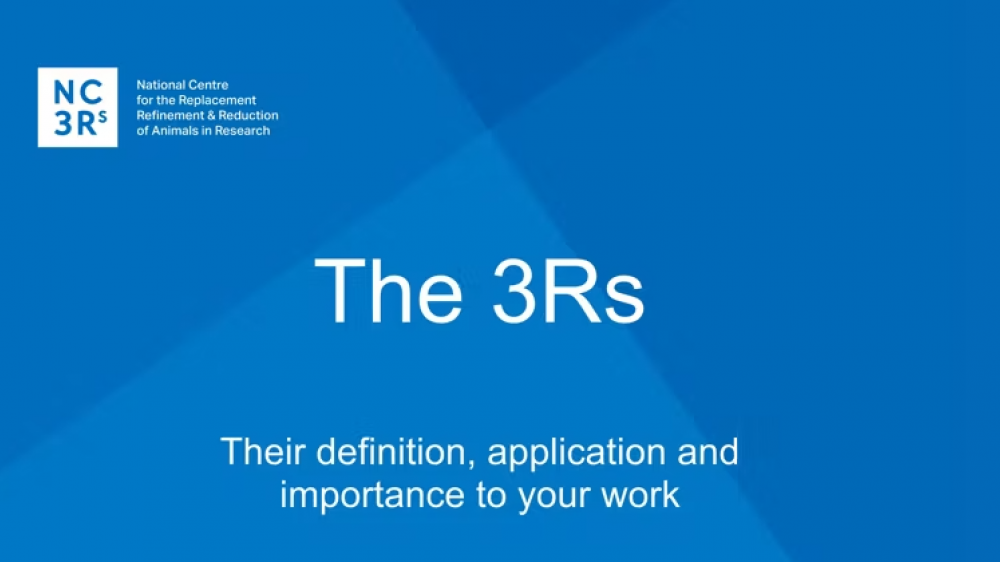The 3Rs
What are the 3Rs?
The principles of the 3Rs (Replacement, Reduction and Refinement) were developed over 50 years ago providing a framework for performing more humane animal research. Since then they have been embedded in national and international legislation and regulations on the use of animals in scientific procedures, as well as in the policies of organisations that fund or conduct animal research. Opinion polls of public attitudes consistently show that support for animal research is conditional on the 3Rs being put into practice.
The NC3Rs is the UK’s national organisation for the 3Rs. Our strategy is to advance the 3Rs by focusing on their scientific impacts and benefits. We have re-defined the standard 3Rs definitions so that they are more reflective of contemporary scientific practice and developments.
Definitions of the 3Rs
The 3Rs were first defined by Russell and Burch in their book The Principles of Humane Experimental Technique. The NC3Rs has updated the definitions in line with common scientific parlance to highlight the importance of the 3Rs to modern research practices.
| Basic | Updated | |
|---|---|---|
| Replacement | Avoiding or replacing the use of animals in areas where they otherwise would have been used. | Accelerating the development and use of predictive and robust models and tools, based on the latest science and technologies, to replace the use of animals in addressing important research questions. |
| Reduction | Minimising the number of animals used consistent with scientific aims. | Appropriately designed and analysed animal experiments that are robust and reproducible, and add to the knowledge base. |
| Refinement | Minimising the pain, suffering, distress or lasting harm that research animals might experience. | Advancing laboratory animal welfare by exploiting the latest in vivo technologies to minimise pain, suffering and distress and improving understanding of the impact of welfare on scientific outcomes. |
Replacement
Replacement refers to technologies or approaches which directly replace or avoid the use of animals in experiments where they would otherwise have been used.
For many years research animals have been used to answer important scientific questions including those related to human health. Animal models are often costly and time-consuming and depending on the research question present scientific limitations, such as poor relevance to human biology. Alternative models can address some of these concerns. In the last decade or so, advances in science and technology have meant that there are now realistic opportunities to replace the use of animals.
We divide replacement into two key categories, full and partial replacement.
Full replacement refers to methods that avoid the use of animals for research and testing purposes. It includes the use of human volunteers, tissues and cells, mathematical and computer models, and established cell lines – often referred to collectively as non-animal technologies or non-animal methods.
Partial replacement includes the use of some animals that, based on current scientific thinking, are not considered capable of experiencing suffering. This includes invertebrates1 such as Drosophila, nematode worms and social amoebae, and immature forms of vertebrates2. Partial replacement also includes the use of primary cells (and tissues) taken from animals killed solely for this purpose (i.e. not having been used in a scientific procedure that causes suffering).
New approach methodologies
In recent years, the term new approach methodologies (NAMs) has come into common use in some parts of the biosciences sector – there are various definitions for NAMs but we use the term to specifically describe replacement technologies (full and partial) for use in assessing chemical or drug toxicity.
1 Note cephalopods such as octopuses and squid are protected in the UK by the Animals (Scientific Procedures) Act 1986.
2 Under the UK's the Animals (Scientific Procedures) Act 1986 embryonic and fetal forms of mammals, birds and reptiles are protected during the last third of their gestation or incubation period, fish and amphibians once they can feed independently, and cephalopods at the point they hatch. Embryonic and fetal forms are protected from an earlier stage of development if they are going to live beyond the stage described above and the procedure is likely to cause them pain, suffering, distress or lasting harm after they have developed to that stage.
Reduction
Reduction refers to methods that minimise the number of animals used per experiment or study consistent with the scientific aims. It is essential for reduction that studies with animals are appropriately designed and analysed to ensure robust and reproducible findings.
Reduction also includes methods which allow the information gathered per animal in an experiment to be maximised in order to reduce the use of additional animals. Examples of this include the use of some imaging modalities which allow longitudinal measurements in the same animal to be taken (rather than for example culling cohorts of animals at specific time points), or microsampling of blood, where small volumes enable repeat sampling in the same animal. In these scenarios, it is important to ensure that reducing the number of animals used is balanced against any additional suffering that might be caused by their repeated use.
Sharing data and resources (e.g. animals, tissues and equipment) between research groups and organisations can also contribute to reduction.
Refinement
Refinement refers to methods that minimise the pain, suffering, distress or lasting harm that may be experienced by research animals, and which improve their welfare. Refinement applies to all aspects of animal use, from their housing and husbandry to the scientific procedures performed on them. Examples of refinement include ensuring the animals are provided with housing that allows the expression of species-specific behaviours, using appropriate anaesthesia and analgesia to minimise pain, and training animals to cooperate with procedures to minimise any distress.
Evidence suggests that pain and suffering can alter an animal’s behaviour, physiology and immunology. Such changes can lead to variation in experimental results that impairs both the reliability and repeatability of studies.
In 2017 we published our strategy for improving animal welfare.
Information about the 3Rs written for a general audience. Perfect for members of the public who are keen to find out more about the 3Rs, and young people doing research for secondary school projects.

A video resource for introductory training on the 3Rs aimed at in vivo researchers and animal technicians.

